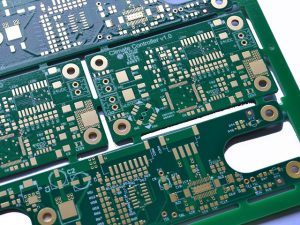
RJ45 connectors and Cat5 cable are commonly used in networking and data transmission, but there are key differences between the two. In this blog post, we’ll explore what RJ45 and Cat5 are, how they differ, and their respective applications.
What is RJ45?
RJ45 is a type of connector that is commonly used in networking and telecommunications. It is named after the registered jack standard that it belongs to (RJ45) and is physically similar to a phone jack. However, unlike a phone jack, which is typically used for analog signals, an RJ45 connector is used for digital data transmission.
An RJ45 connector has eight pins arranged in a specific configuration, which allows it to transmit data over twisted pair cables. The connector has a latch mechanism that holds it securely in place and prevents it from becoming disconnected.
In practical applications, RJ 45 connectors can usually be converted from other types of connectors, such as M12 Ethernet connectors.
What is Cat5?
Cat5, or Category 5, refers to a type of twisted pair cable that is used in networking and data transmission. It is named after the category of data transmission performance that it is capable of, which is up to 100 MHz.
Cat5 cable consists of four pairs of copper wires that are twisted together and covered in a protective jacket. The wires are arranged in a specific configuration, with each pair having a different number of twists per inch. This arrangement helps to reduce crosstalk, or interference, between the pairs.
Cat5 cable is commonly used in networking applications, such as connecting computers to a network or connecting a router to a modem. It is also used in telecommunications, such as for connecting phones to a phone system.
Differences between RJ45 and Cat5
While RJ45 connectors and Cat5 cable are often used together, they are not interchangeable. Here are some key differences between the two:
- Intended use: RJ45 connectors are used to connect cables together, while Cat5 cable is used as the actual cable for transmitting data.
- Performance capabilities: RJ45 connectors can transmit data at a maximum speed of 100 MHz, which is the same as Cat5 cable. However, newer versions of Cat5 cable, such as Cat5e and Cat6, are capable of higher speeds.
- Physical characteristics: RJ45 connectors have eight pins arranged in a specific configuration, while Cat5 cable has four pairs of twisted wires. The connectors have a latch mechanism for secure connection, while the cable has a protective jacket.
Applications of RJ45 and Cat5
RJ45 connectors and Cat5 cable are commonly used in a variety of applications, including:
- Networking: Both RJ45 connectors and Cat5 cable are used to connect computers and other devices to a network. The connectors are used to connect the cables together, while the cable transmits the data.
- Telecommunications: RJ45 connectors and Cat5 cable are also used in telecommunications, such as for connecting phones to a phone system.
- Data transmission: In general, RJ45 connectors and Cat5 cable are used to transmit digital data from one device to another. This could include transmitting data over the internet, within a local network, or between devices in a home or office.
Conclusion
RJ45 connectors and Cat5 cable are commonly used in networking and data transmission. While they are often used together, they serve different purposes and have different physical characteristics. Understanding the differences between RJ45 and Cat5 can help you choose the right components for your specific application.




